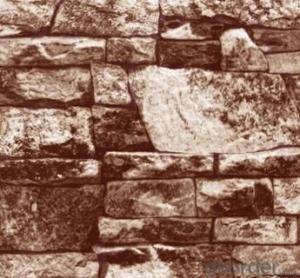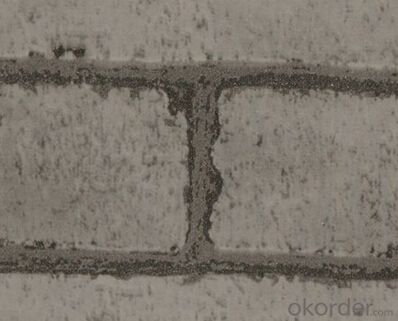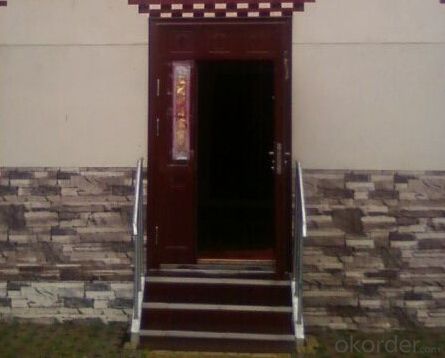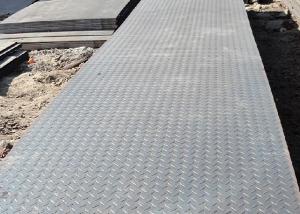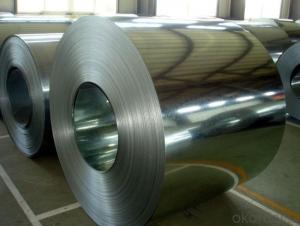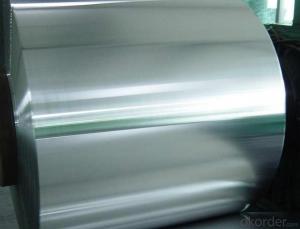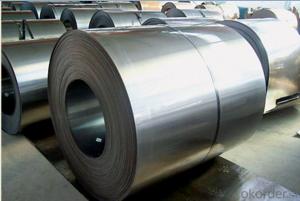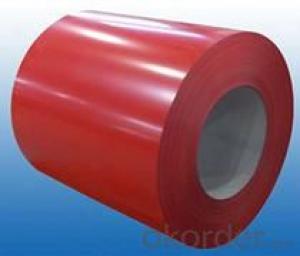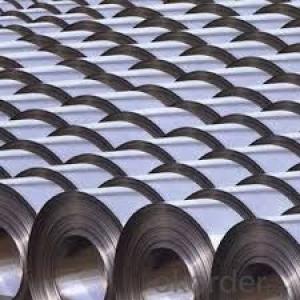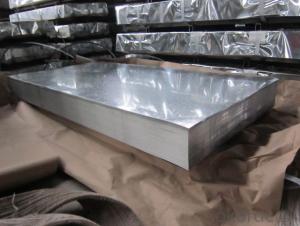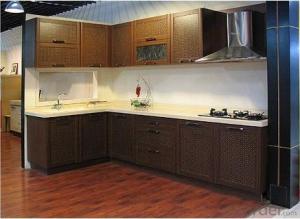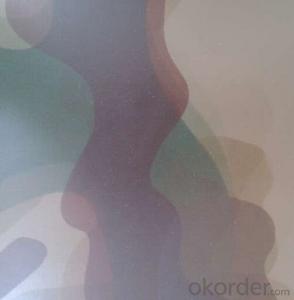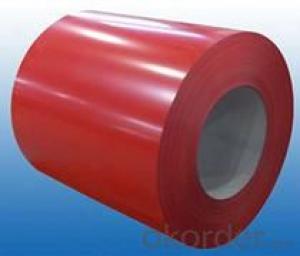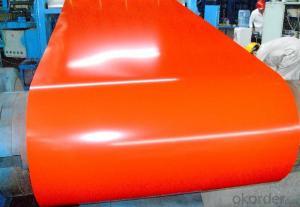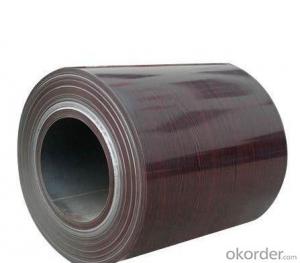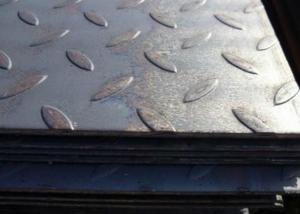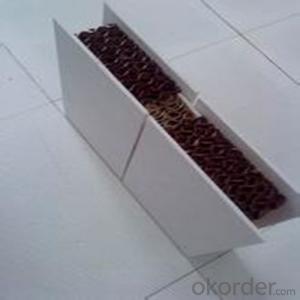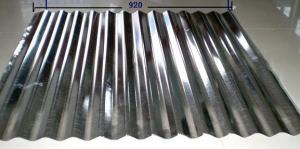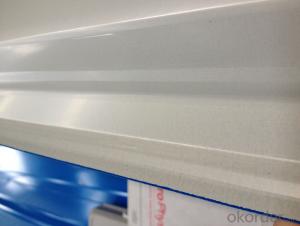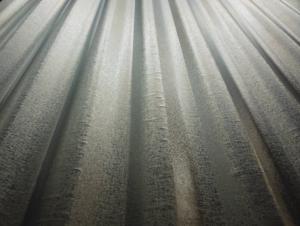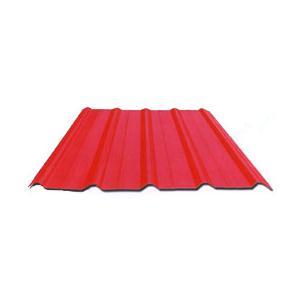Print Prepainted Galvanized Steel Coil Wooden Pattern for Wall
- Loading Port:
- Tianjin
- Payment Terms:
- TT OR LC
- Min Order Qty:
- 12 m.t.
- Supply Capability:
- 1000 m.t./month
OKorder Service Pledge
OKorder Financial Service
You Might Also Like
1.Structure of Print Prepainted Galvanized Steel Coil Wooden Pattern for Wall:
With Gi as base metal,after pretreatmet (degrease and chemical treatment) and liquid dope with several Layers of color,then after firing and cooling,finally the plate steel is called pre-painted galvanized steel ( PPGI) .Pre-painted galvanized steel is good capable of decoration ,molding,corrosion resistance
2.Main Features of Print Prepainted Galvanized Steel Coil Wooden Pattern for Wall:
• Excellent process capability
• Smooth and flat surface
• Workability, durability
• Excellent heat resistance performance
• High strength
• Good formability
• Good visual effect
3.Print Prepainted Galvanized Steel Coil Wooden Pattern for Wall Images
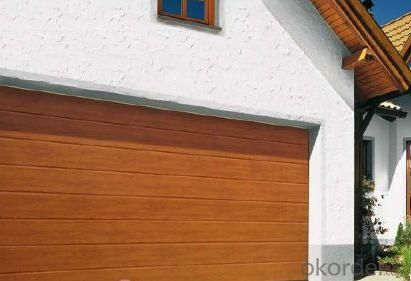
4.Print Prepainted Galvanized Steel Coil Wooden Pattern for Wall Specification
Standard:ASTM, GB,JIS,JIS G3302 ASTM 755 EN10169
Grade: DX51D CGCC CS
Thickness: 0.13mm~3.0mm,
Width: 1250,600-1250mm
Coil weight:3-12 MT
Coil ID:508/610mm
Chemical composition:
C | Si | Mn | Cr | Ni | P | S |
0.150 | 0.476 | 11.231 | 12.50 | 0.900 | 0.039 | 0.010
|
5.FAQ of Print Prepainted Galvanized Steel Coil Wooden Pattern for Wall
We have organized several common questions for our clients,may help you sincerely:
1.How do you control your quality
We have established the international advanced quality management system,every link from raw material to final product we have strict quality test;We resolutely put an end to unqualified products flowing into the market. At the same time, we will provide necessary follow-up service assurance.
2.How long we will receive the goods ?
After receiving your deposit or workable lc ,our normal shipment date is 15-20days,and it takes around 28 days to reach your port of destination. But is up to different destination
3. What is your moq
Normally our moq is 12mt per size ,but it is up to different size.
- Q: What is the difference between a steel sheet and a steel plate?
- A steel sheet and a steel plate have a few key differences. Firstly, the thickness of a steel sheet is generally less than 6mm, while a steel plate is typically thicker and measures 6mm or more. This difference in thickness is primarily due to the intended use of each product. Steel sheets are often used in applications where weight and flexibility are important, such as in the manufacturing of automobile bodies or appliances. On the other hand, steel plates are commonly utilized in heavy-duty constructions, such as bridges, buildings, or machinery, where strength and durability are paramount. Another difference lies in the manufacturing process. Steel sheets are typically produced through hot rolling, which involves heating the steel above its recrystallization temperature and then passing it between rollers to achieve the desired thickness. Steel plates, on the other hand, can be produced through hot rolling or cold rolling processes. Cold rolling involves passing the steel through rollers at room temperature, resulting in a more precise and smoother surface finish. Additionally, the size of steel sheets and plates also varies. Steel sheets tend to be standardized in terms of width and length, making them easier to handle and transport. Steel plates, on the other hand, are available in various sizes and dimensions, allowing for greater customization to suit specific project requirements. In summary, the primary differences between a steel sheet and a steel plate lie in their thickness, manufacturing process, and intended use. While steel sheets are thinner and more lightweight, steel plates are thicker and employed in heavy-duty applications that require strength and durability.
- Q: What are the advantages of using steel sheets in construction?
- There are several advantages of using steel sheets in construction. Firstly, steel sheets are incredibly strong and durable, making them ideal for supporting heavy loads and withstanding harsh weather conditions. Secondly, steel sheets are fire-resistant, providing an added layer of safety to the structure. Additionally, steel sheets are easy to work with, allowing for quick and efficient construction processes. Moreover, steel is a sustainable material, as it can be recycled and reused. Finally, steel sheets offer design flexibility, allowing architects and engineers to create innovative and aesthetically pleasing structures.
- Q: Are steel sheets resistant to radiation or electromagnetic interference?
- Yes, steel sheets are generally resistant to radiation and electromagnetic interference due to their high electrical conductivity and ability to block or attenuate electromagnetic waves.
- Q: What is called steel plate sanding process?
- The friction requirement of high strength bolts on the joint surface is accomplished by sand blasting.
- Q: What are the different manufacturing processes for steel sheets?
- There are several manufacturing processes for steel sheets, including hot rolling, cold rolling, and electro-galvanizing. Hot rolling involves heating the steel above its recrystallization temperature and then passing it through rollers to achieve the desired thickness and shape. Cold rolling, on the other hand, involves passing the steel through rollers at room temperature to further refine its thickness and surface finish. Electro-galvanizing is a process where a layer of zinc is electroplated onto the steel sheet to provide corrosion resistance. Other processes such as pickling, annealing, and coating may also be involved in the manufacturing of steel sheets.
- Q: What is the purpose of steel sheets?
- The purpose of steel sheets is to provide a versatile and durable material for various construction and manufacturing applications. They are commonly used in the automotive industry, building construction, infrastructure projects, and manufacturing of appliances and machinery. Steel sheets offer strength, structural integrity, and corrosion resistance, making them suitable for a wide range of purposes.
- Q: Can the steel sheets be easily folded or creased?
- No, steel sheets cannot be easily folded or creased due to their strong and rigid nature.
- Q: How do steel sheets perform in fire resistance?
- Steel sheets have excellent fire resistance properties due to their high melting point and low thermal conductivity. When exposed to fire, steel sheets form a protective layer of iron oxide, known as fire scale, which helps to insulate and slow down the transfer of heat. This enables steel sheets to maintain their structural integrity for a longer period, providing valuable time for evacuation and firefighting efforts. Overall, steel sheets are considered to be a reliable and durable material in terms of fire resistance.
- Q: Are the steel sheets susceptible to rusting?
- Yes, steel sheets are susceptible to rusting. Rust is the result of a chemical reaction between iron, oxygen, and moisture. Since steel is primarily made of iron, it can easily corrode when exposed to air and water. However, the extent of rusting depends on various factors such as the type of steel, environmental conditions, and the presence of protective coatings. In order to prevent rusting, steel sheets are often coated with materials like zinc or paint to create a barrier between the steel surface and the surrounding environment. Regular maintenance and proper storage can also help minimize the risk of rust formation on steel sheets.
- Q: Can steel sheets be used for manufacturing machinery or equipment?
- Yes, steel sheets can be used for manufacturing machinery or equipment. Steel is a versatile and durable material that can provide the necessary strength and stability required for various industrial applications. It is commonly used for constructing machine frames, structural components, and other parts of machinery or equipment.
Send your message to us
Print Prepainted Galvanized Steel Coil Wooden Pattern for Wall
- Loading Port:
- Tianjin
- Payment Terms:
- TT OR LC
- Min Order Qty:
- 12 m.t.
- Supply Capability:
- 1000 m.t./month
OKorder Service Pledge
OKorder Financial Service
Similar products
Hot products
Hot Searches
Related keywords
